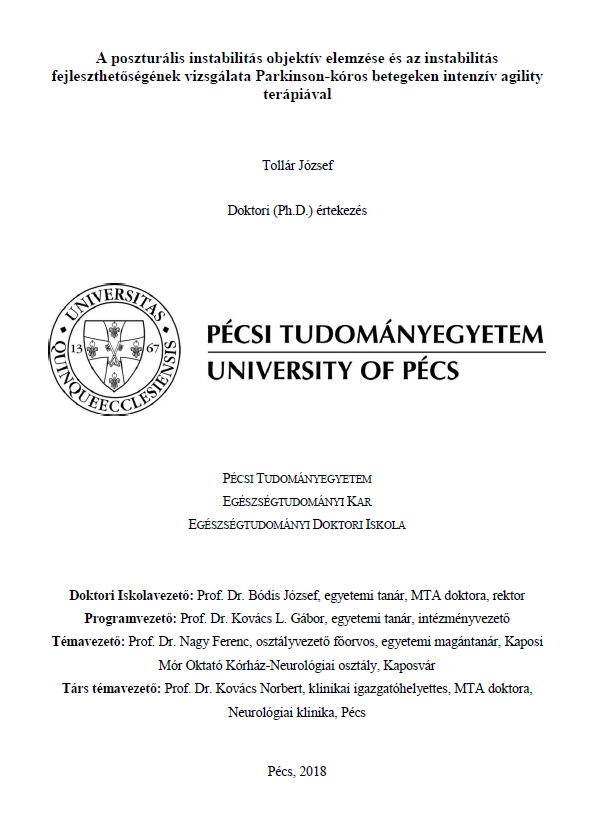A poszturális instabilitás objektív elemzése és az instabilitás fejleszthetőségének vizsgálata Parkinson-kóros betegeken intenzív agility terápiával
Abstract
Physical performance reaches its peak in young adulthood, then decreases continuously. With the extent of biological changes, the loss of performance is directly proportional to the individual. The loss of muscle fibers is accompanied by a decrease in speed, strength, and endurance. In addition to the deterioration of conditioning capabilities, there are also changes in coordination capabilities. By reducing the body's water content, the connective tissues lose their elasticity, resulting in a deterioration in flexibility and a narrower range of joint movement. The speed of pacing is slowing down, the neuromuscular relationship deteriorates, the time span of the spinal reflexes increases, the reaction time increases, and coordination decreases. Most of the functional loss that occurs naturally in the aging organism is associated with changes in the neuromuscular (nerve) and bone system. Age-related neural modifications include muscle atrophy (sarcopenia), weakness, poor physcial fitness, mobility limitation, impaired postural control, increase in reflex latency, slowing of reaction time, impaired neuromuscualar coordination, respiratory dysfunction, arthritis, and osteoporosis. The described changes, the weaker and shortened muscles, reduced flexibility, posture deterioration, reduced stamina, balance problems, slower reaction are all areas that can be positively influenced by the proper tasks. Regular movement has proven to contribute to the preservation of health, as activity helps it to take care of ourselves. In order to maintain body balance and overcome gravity, our short muscles need to be stretched, weakened muscles need to be strengthened to prevent muscle imbalance. These special systems can only be developed with motion and proper stimulation.

